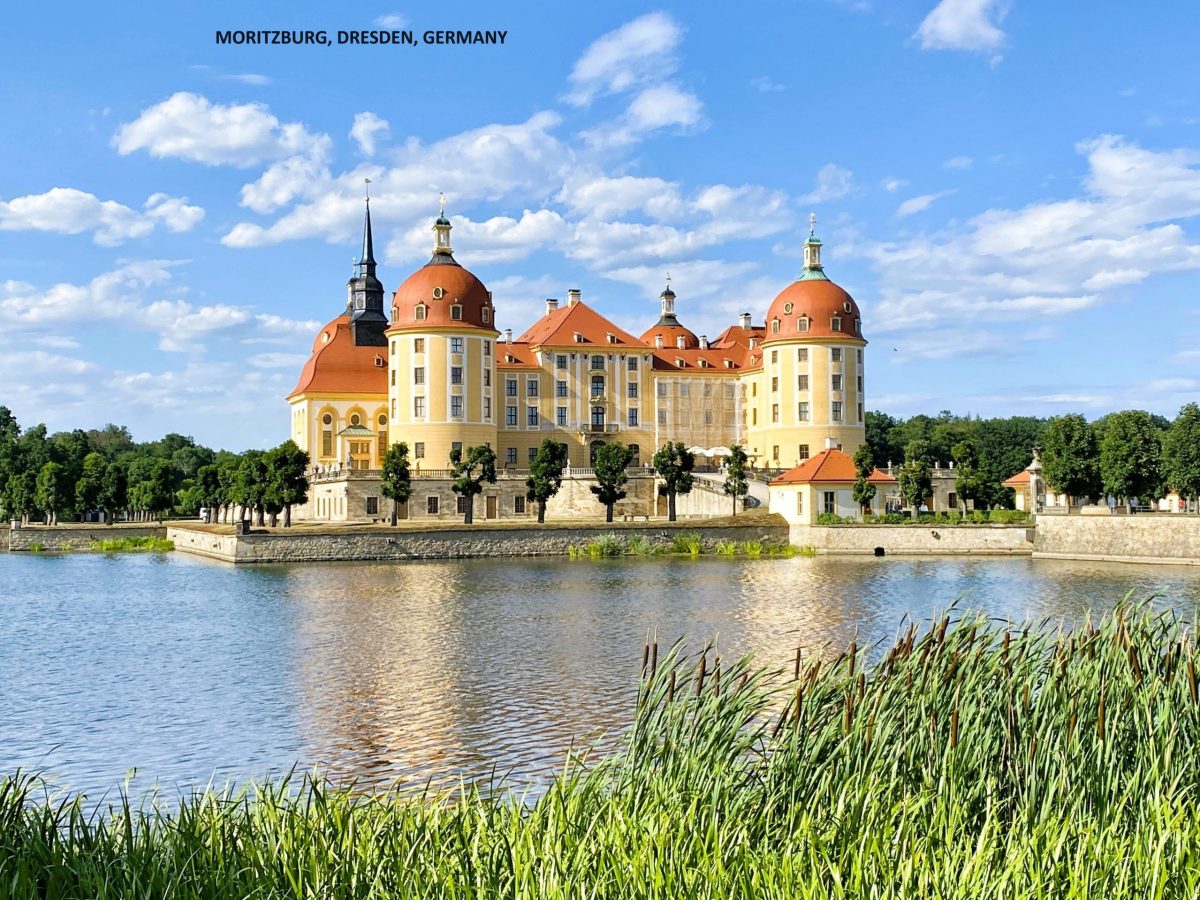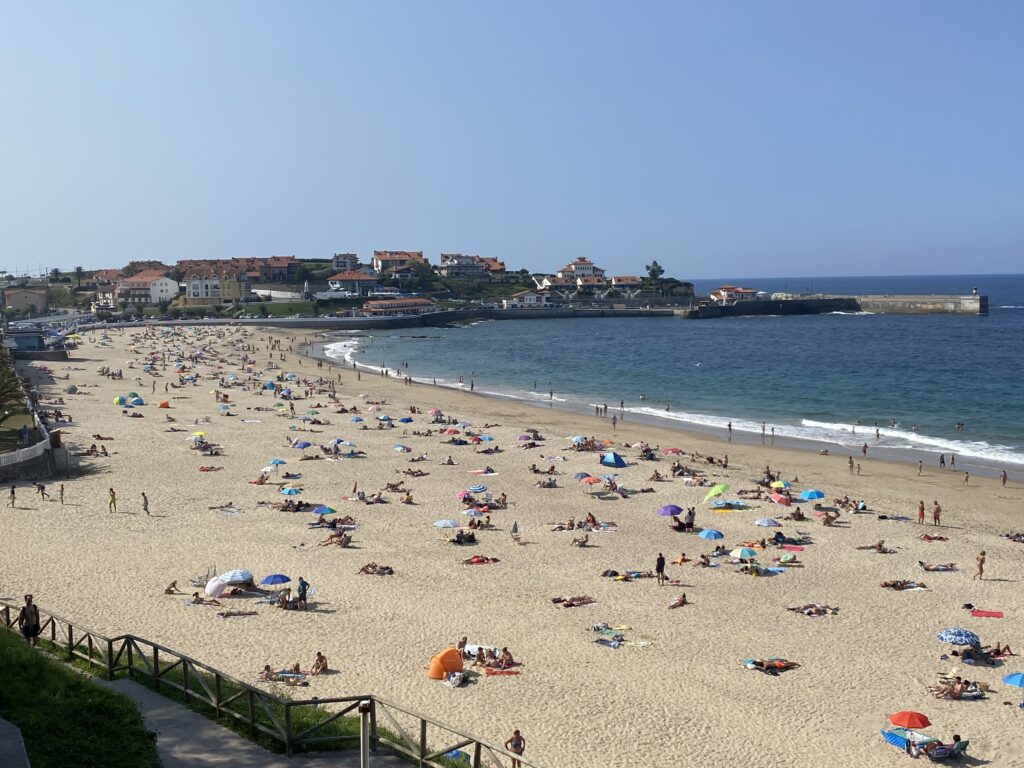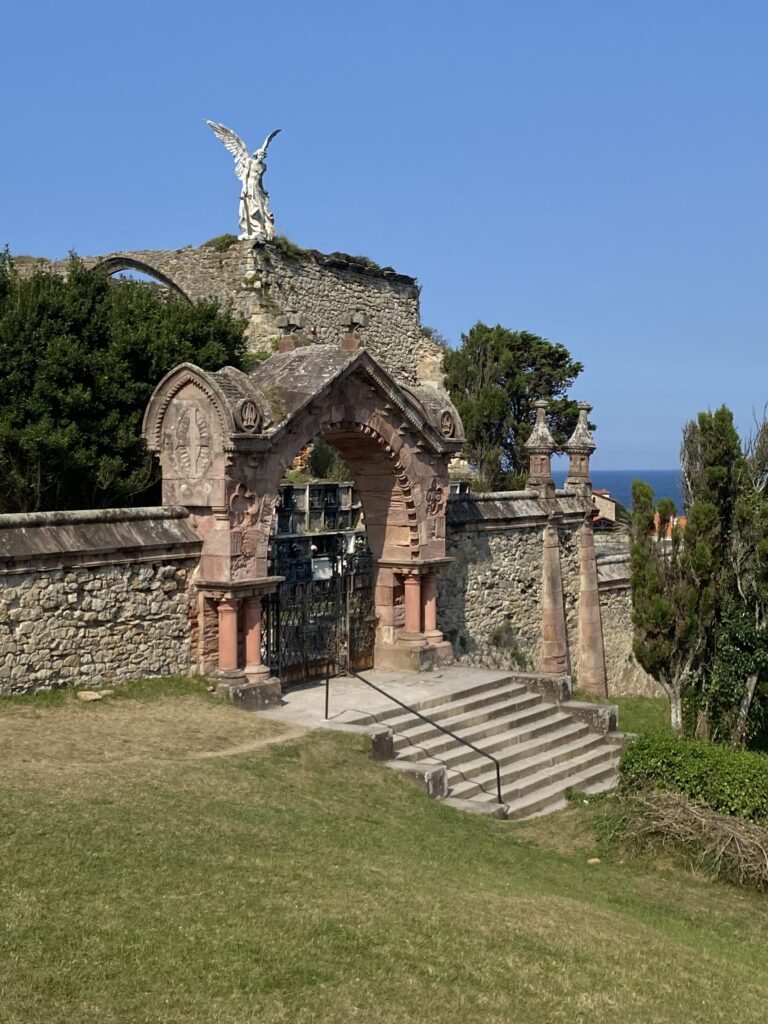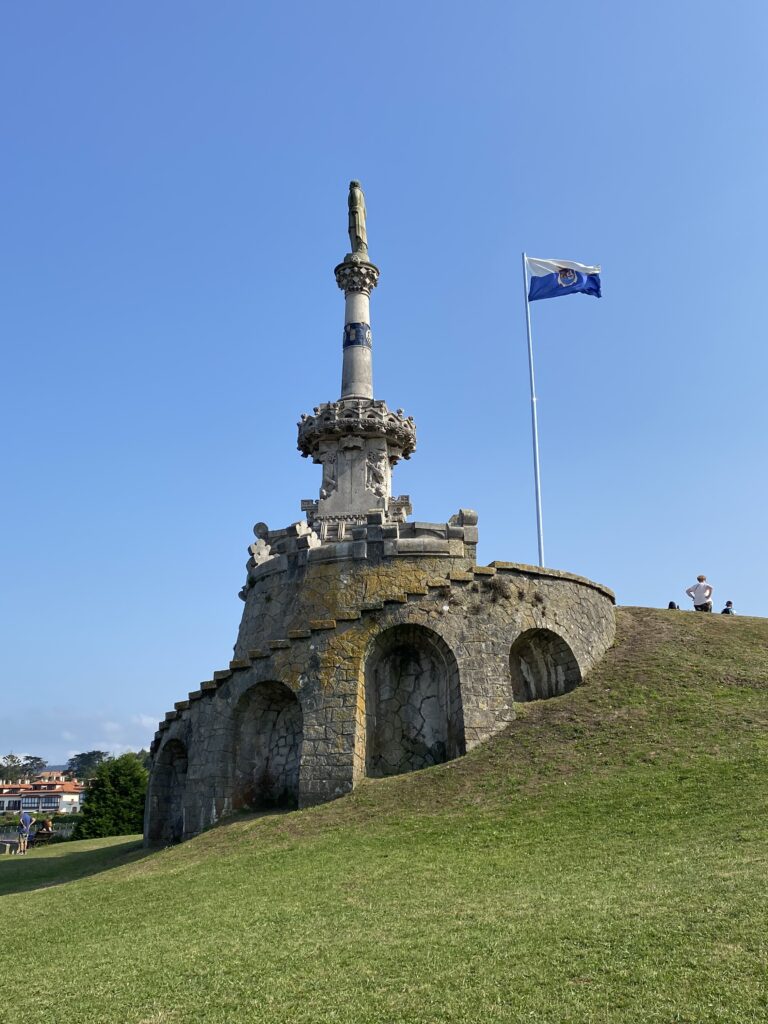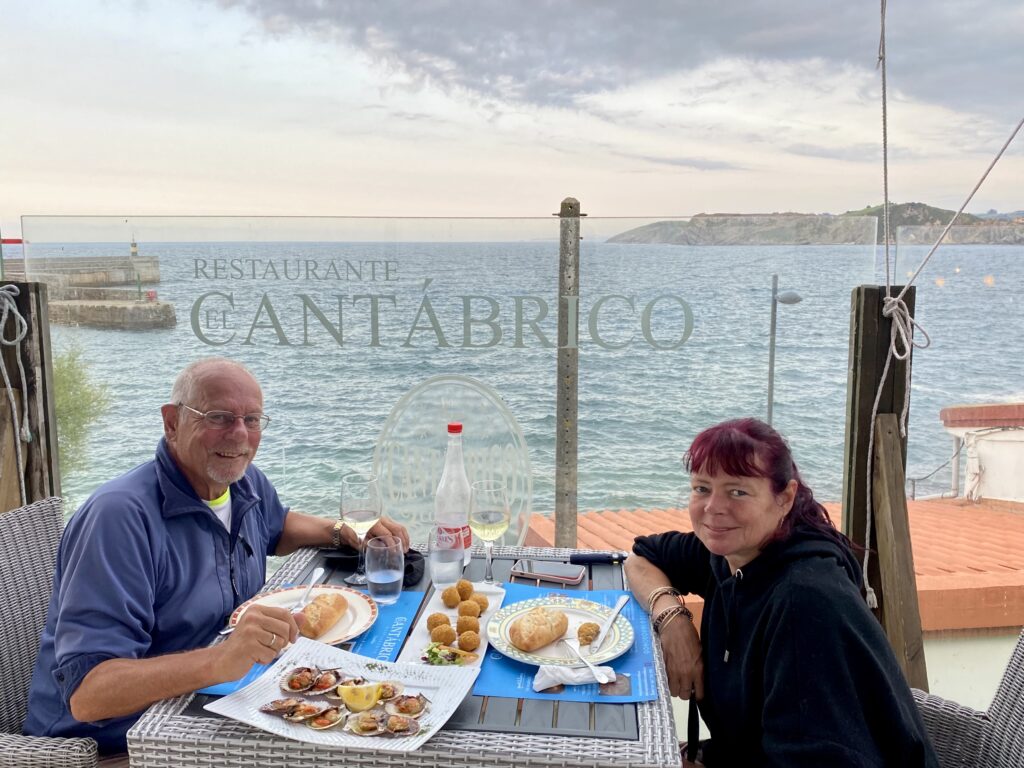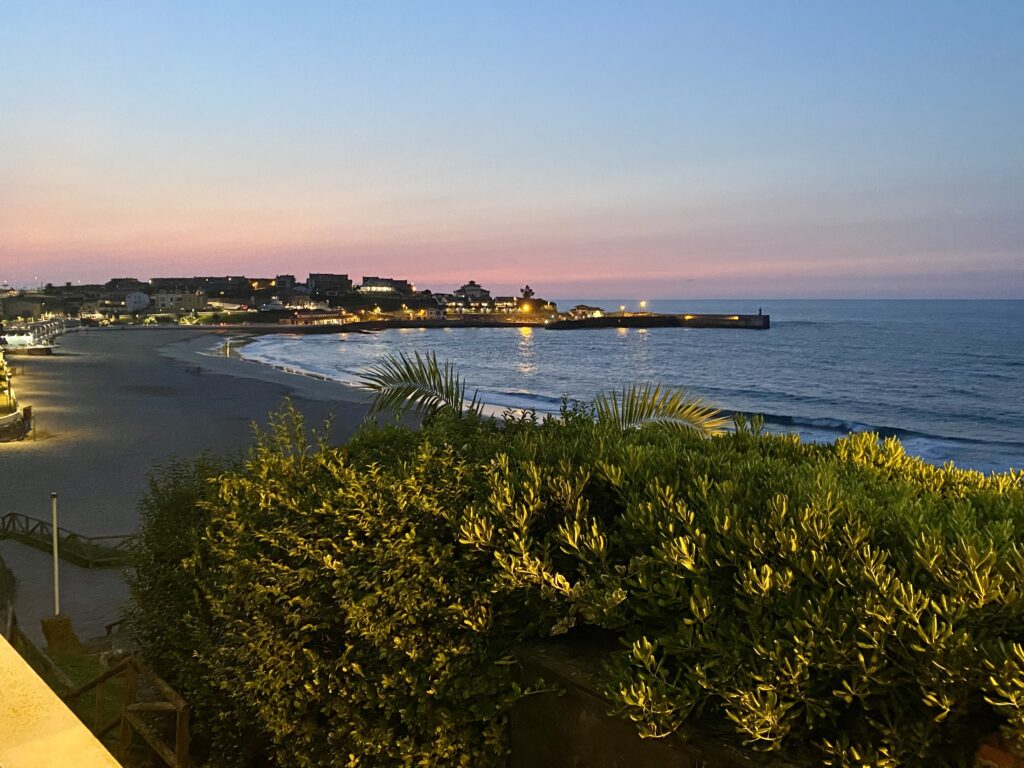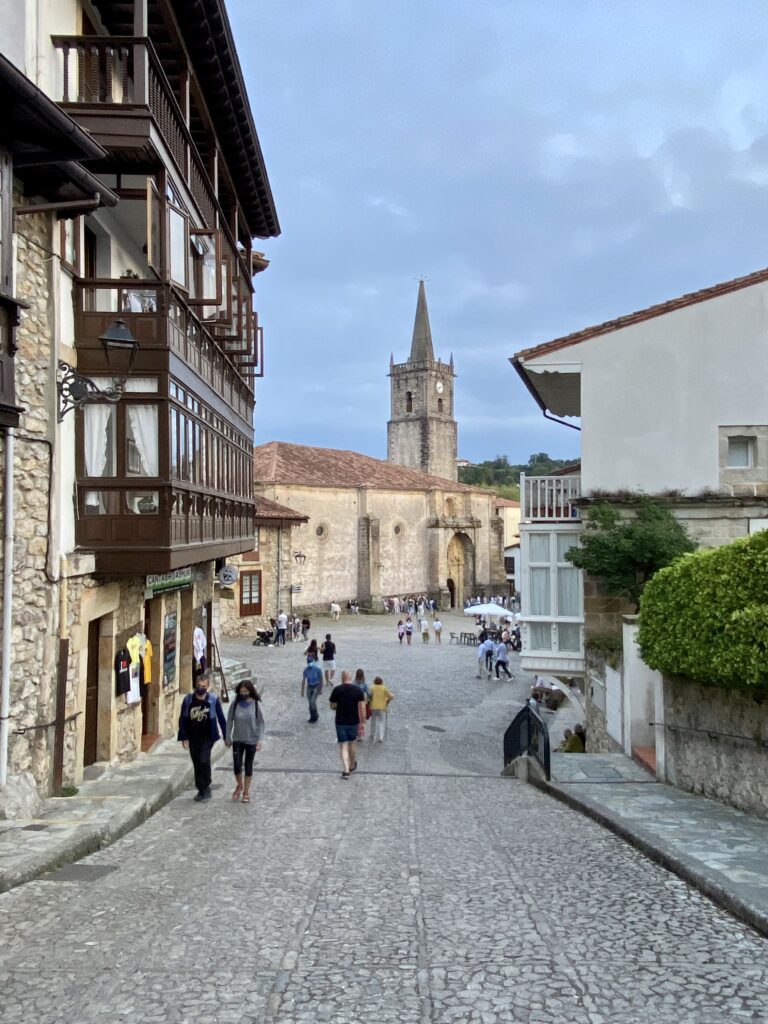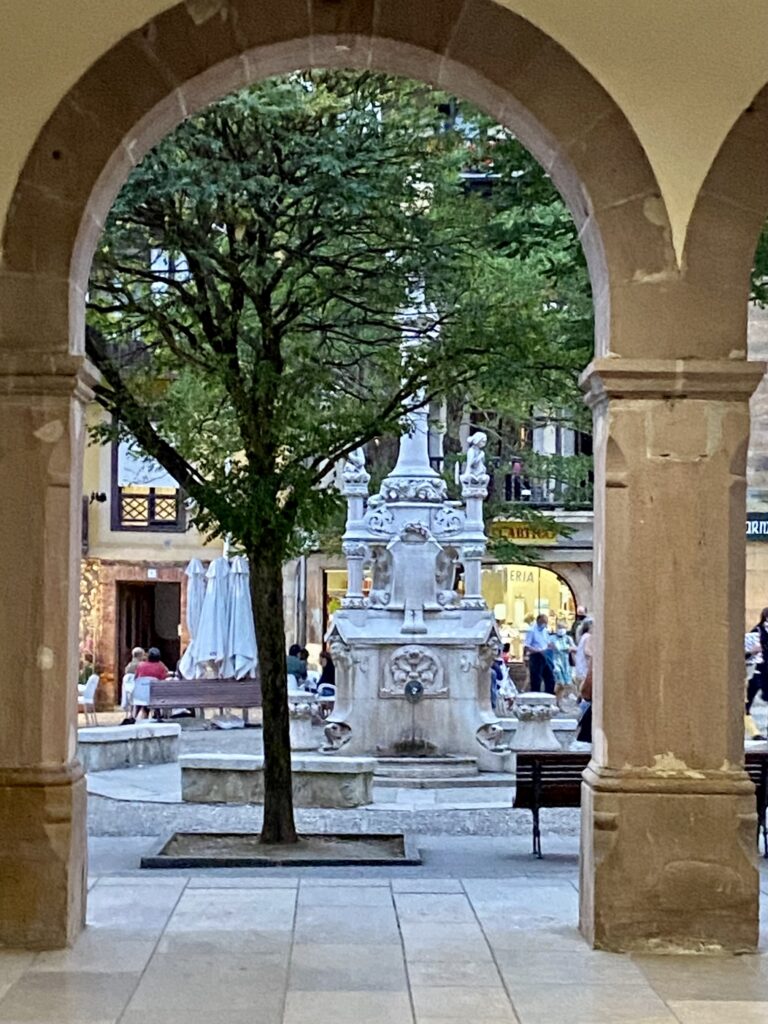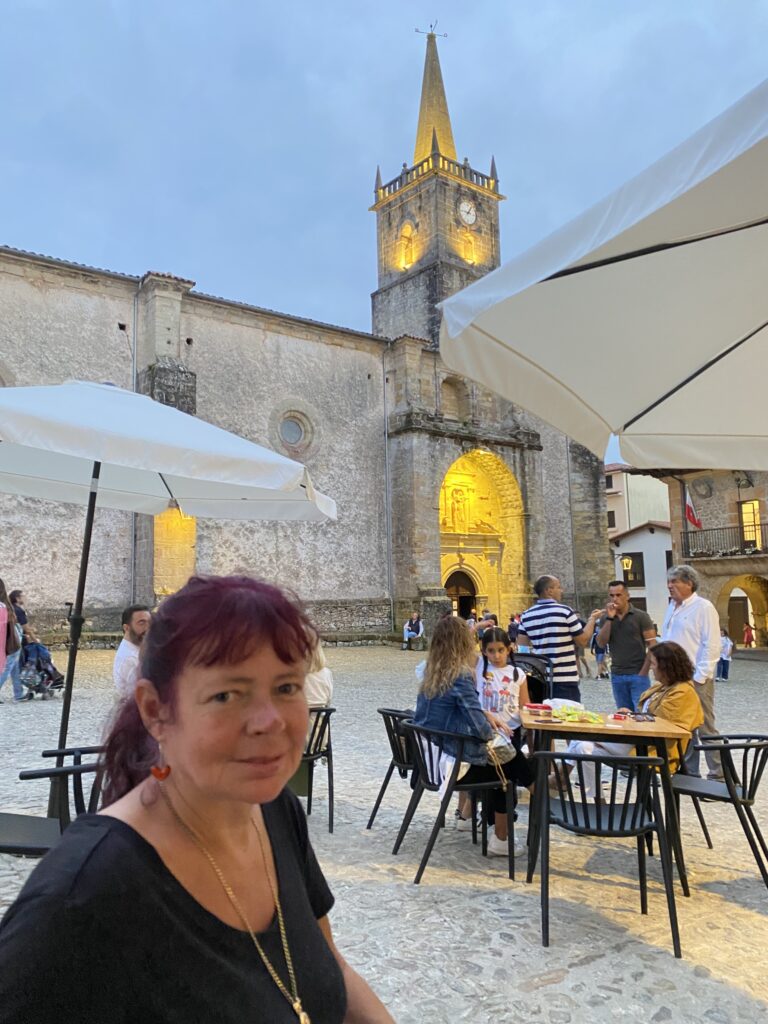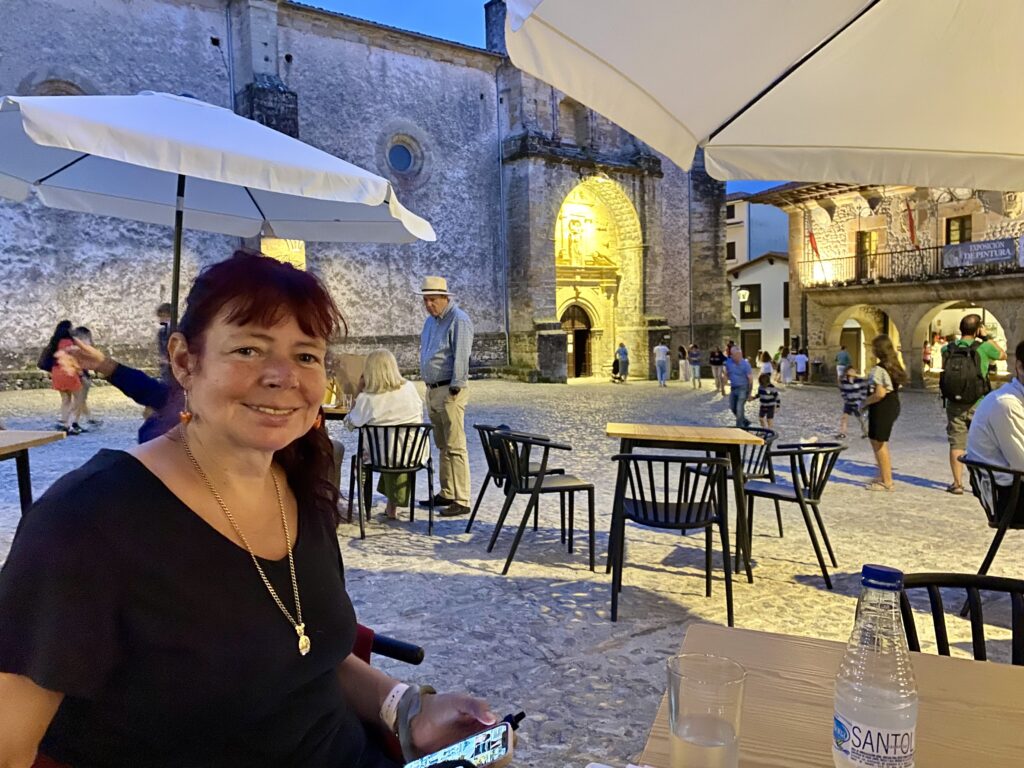Comillas is a small town on the coast which has been hailed as one of the most beautiful towns in Cantabria. We decided to stop there for a couple of days.
The town is split into two quite distinct parts being, (a) the old town and (b) the port & beaches (and the area immediately overlooking the beaches). I decided to start with the port and leave the old town for the next day (but, if you wanted to, the place is small enough to do both in the one day).
We were parked at one end of the large golden sandy beach of Playa de Comillas and within twenty minutes or so I had walked the length of this beach to the small fishing port at the other end. There are a few cafe bars on the beach but they were all plastic chairs and tables and very busy and so I sought out a small quiet more traditional bar at the back of the port with picture postcard views out to sea and back over the harbour and beach. I don’t know the name of the bar but it was a great place to take a cold beer and watch the world do it’s thing.
After a beer I set off to find a suitable restaurant for the evening (that was easy – there are two or three with outside seating alongside the harbour) and then I continued up behind the town to a very imposing building on La Cardosa Hill which I subsequently learned is the Old Pontificial University of Comillas. This university was commissioned by the first Marques De Comillas (more about him later) with a view to training and educating young priests from poor families.
I didn’t dwell at the university but made my way back down to a couple of other interesting features which overlook the beaches and which I had seen on my way up the La Cardosa. The first of these features was the Gothic looking San Cristobal Cemetery which is built on the ruins of an old 15th century church. I don’t make a habit of wandering around cemeteries but some are worth a visit and this one certainly is. It’s a small but quite spectacular cemetery, almost entirely enclosed within the ruined walls of the old church and accessed through large, forbidding wrought iron gates. There’s a huge marble statue of what I think is supposed to be a Guardian Angel perched on one corner of the ruin but it looks really eerie and could pass as an Angel of Death. Not sure I would want to be in that cemetery on my own at night.
The second of the sites on the grassy hills overlooking the beach is the Monument to the Marques de Commilas. The Marques was born Antonio Lopez y Lopez in 1817 in Comillas. He was of humble origin with limited prospects and at the age of 14 he emigrated to Cuba. When he returned some years later it was as one of the richest men in all of Spain. It is thought he made his fortune in the slave trade but, whatever, he used some of that fortune to support King Alfonso XII’s ventures in Cuba and in return was appointed Marques de Comillas.
That first night, I took Vanya and the dogs back along the beach to the Restaurante Cantabrico and we sat on their terrace overlooking the harbour and beach and enjoyed a long meal of spider crab and scallops and a couple of bottles of Albarino.
Sorry, I was talking about Antonio Lopez y Lopez. The newly appointed Marques immediately set about creating a legacy in his birthplace. He commissioned numerous significant building projects by some of Europe’s finest architects and builders including but not limited to the aforementioned University, the Sobralleno Palace (together with it’s imposing Chapel-Musem) and a particularly impressive summerhouse, now known as the Capricho da Gaudi (because it was designed by Anton Gaudi who later worked Barcelona’s cathedral, the Sagrada Familia).
On our second day, late in the afternoon, we set off into the old town of Comillas to track down some of the projects which the Marques had commissioned. We’d left it too late and and arrived at the Capricho da Gaudi just as it was closing to visitors. They wouldn’t even let us walk the gardens. To be fair, I believe the building is now an upmarket restaurant and they were probably making ready for their evening covers. No matter, we took a couple of photos through the fence.
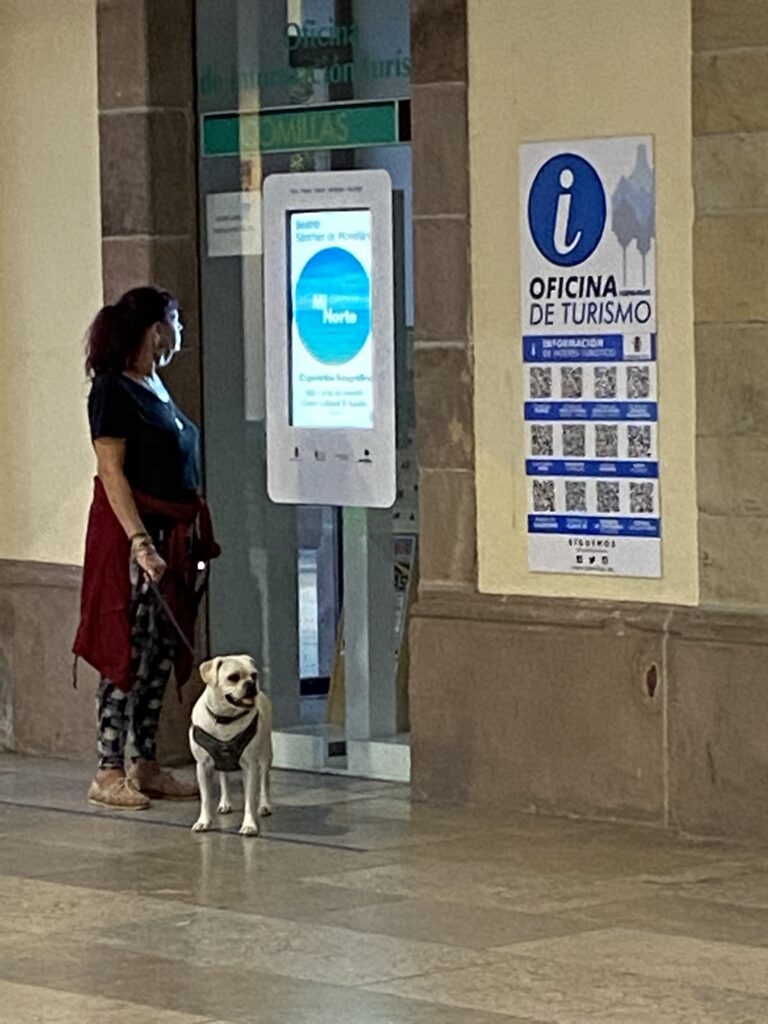
The tourist office 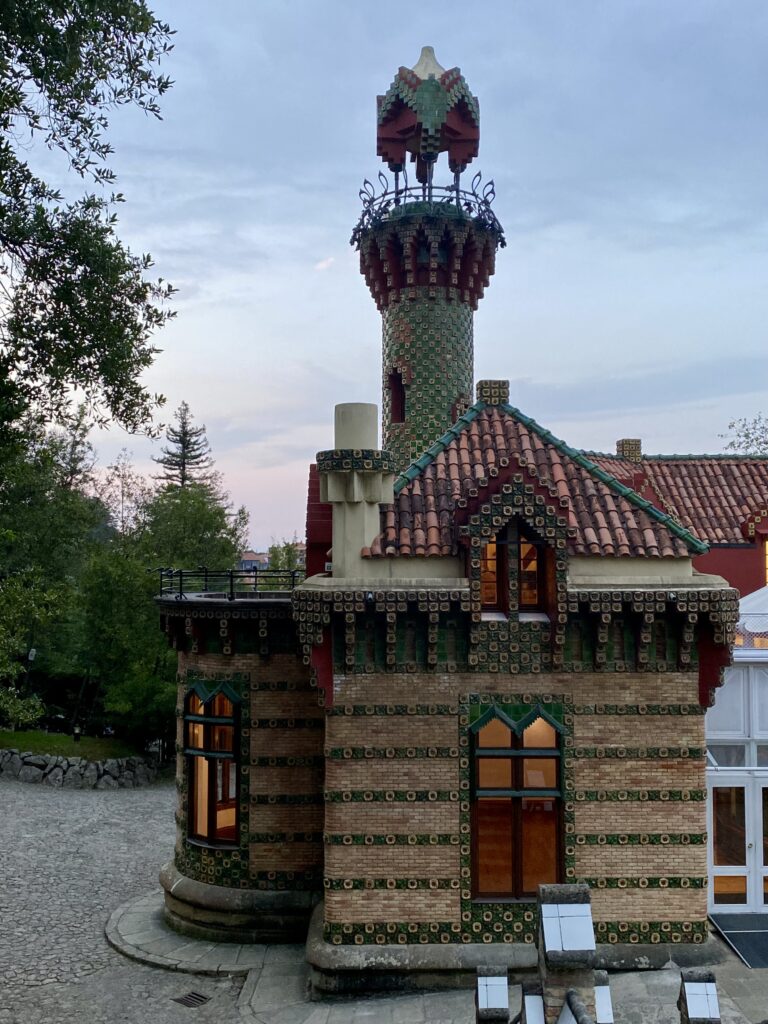
The Capricho de Gaudi 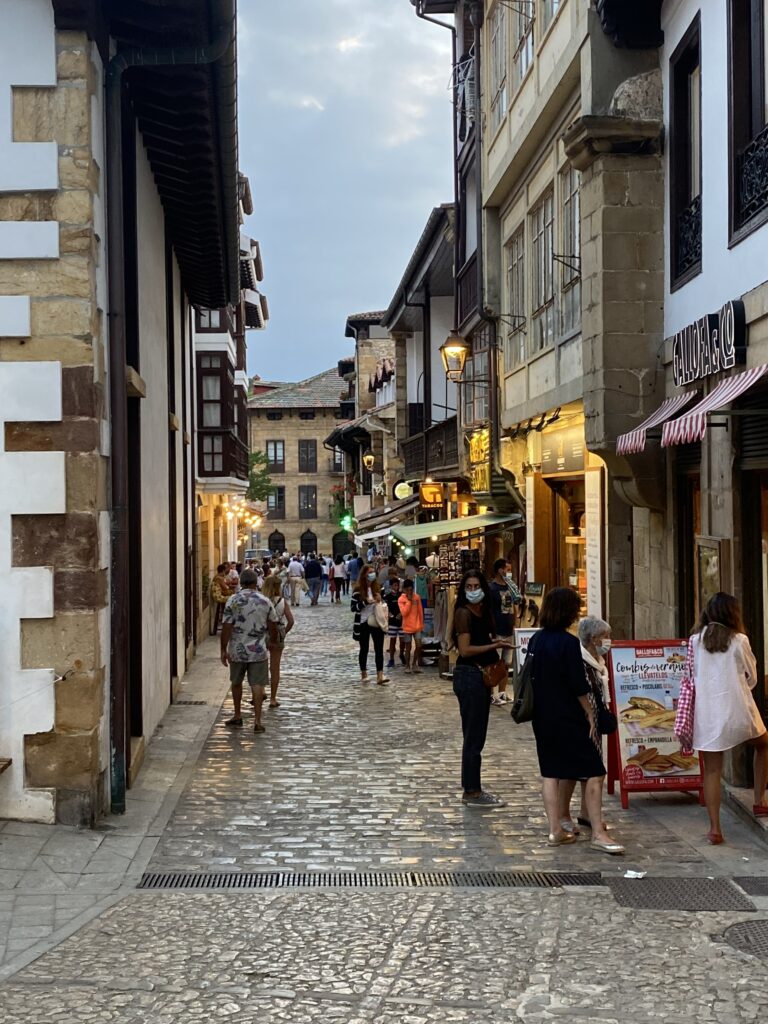
A typical street scene
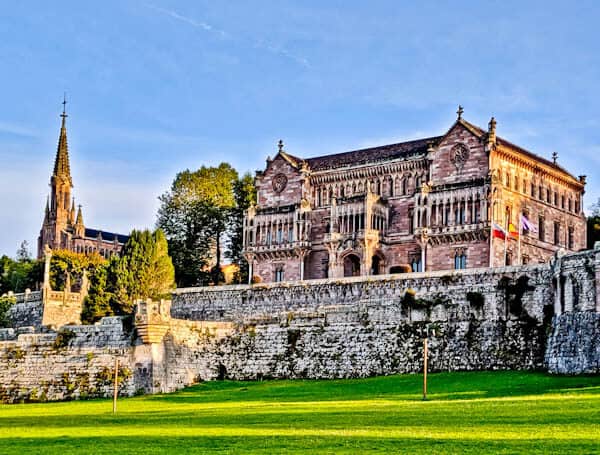
The Sobralleno Palace 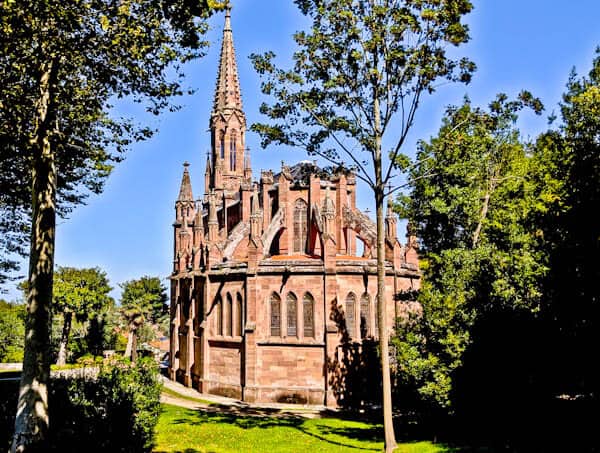
The Palace’s Chapel-Museum
Neither Vanya nor I were prepared for the old town and were pleasantly surprised. It is a wonderful mix of new and old; narrow cobbled streets and squares combined with cafes, souvenir shops and, most unusual, a surprising number of ladies clothes shops. Some of the merchandise we saw was fantastic. We had a good walk around (with Vanya showing particular interest in a dress shop on the Plaza de la Constitucion) and then settled ourselves down on the Plaza del Corro (by the church) for beer and doughnuts.
I was pleased we stopped at Comillas. Back to France now.

